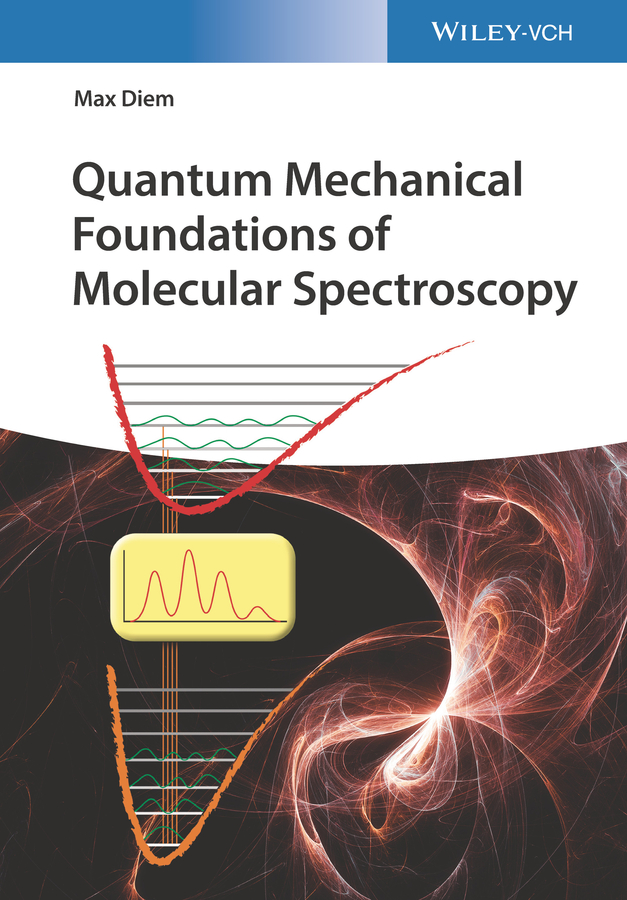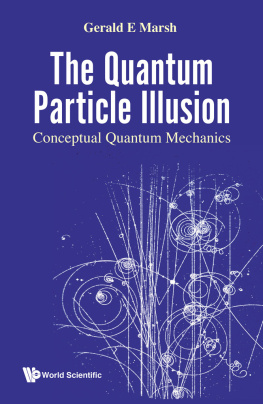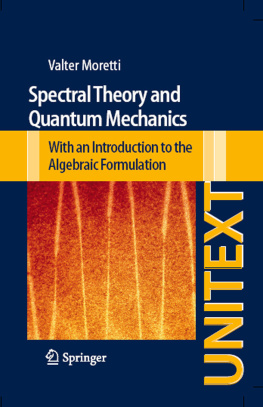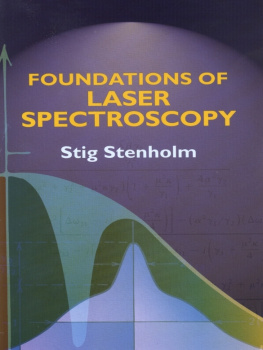
Table of Contents
List of Tables
- Chapter 1
- Chapter 5
- Chapter 8
- Chapter 9
- Chapter 10
List of Illustrations
- Chapter 1
- Chapter 2
- Chapter 3
- Chapter 4
- Chapter 5
- Chapter 6
- Chapter 7
- Chapter 8
- Chapter 9
- Chapter 10
- Chapter 11
- Appendix 2
- Appendix 3
- Appendix 4
Guide
Pages
Quantum Mechanical Foundations of Molecular Spectroscopy
Max Diem

Author
Max Diem, PhD
Professor Emeritus
Department of Chemistry
Northeastern University
Laboratory of Spectral Diagnosis
Boston, MA
USA
CoveriStock 965444768 / StationaryTraveller
Supplementary material for instructors, including a Solution Manual, available for download from www.wiley-vch.de/textbooks
All books published by WILEYVCHare carefully produced. Nevertheless, authors, editors, and publisher do not warrant the information contained in these books, including this book, to be free of errors. Readers are advised to keep in mind that statements, data, illustrations, procedural details or other items may inadvertently be inaccurate.
Library of Congress Card No.:
applied for
British Library CataloguinginPublication Data
A catalogue record for this book is available from the British Library.
Bibliographic information published by the Deutsche Nationalbibliothek
The Deutsche Nationalbibliothek lists this publication in the Deutsche Nationalbibliografie; detailed bibliographic data are available on the Internet at < http://dnb.d-nb.de >.
2021 WILEYVCH GmbH, Boschstr. 12, 69469 Weinheim, Germany
All rights reserved (including those of translation into other languages). No part of this book may be reproduced in any form by photoprinting, microfilm, or any other means nor transmitted or translated into a machine language without written permission from the publishers. Registered names, trademarks, etc. used in this book, even when not specifically marked as such, are not to be considered unprotected by law.
Print ISBN:9783527347926
ePDF ISBN:9783527829613
ePub ISBN:9783527829606
Cover DesignSCHULZ GrafikDesign, Fugnheim, Germany
Preface
When the author took courses in quantum mechanical principles and chemical bonding in graduate school in the early 1970s, the course materials seldomly covered the fascinating interplay between spectroscopy and quantum mechanics, and textbooks of these days devoted the majority of space to derivations and mathematical principles and the discussion of the hydrogen atom and chemical bonding. While an understanding of these subjects is, of course, a necessity for further study, this book emphasizes a slightly different approach to quantum mechanics, namely, one from the viewpoint of a spectroscopist. In this approach, the existence of stationary energy states either electronic, vibrational, rotational, or spin states is considered the fundamental concept, since spectroscopy exists because of transitions between these states. Quantum mechanics provides the theoretical framework for the interpretation of experimental data. On the other hand, spectroscopic results provide the impetus for refining theories that explain the results. Classical physics cannot provide this framework, since the idea of stationary energy states violates the laws of classical physics.
Next page










